The Seven Wonders of the Ancient World were remarkable architectural feats that astounded travelers and scholars of antiquity. Selected by Greek travelers and chronicled in poetry and guides, the first known list of these wonders dates back to the 2nd to 1st century BCE. It includes the following: the Great Pyramid of Giza, the Hanging Gardens of Babylon, the Temple of Artemis at Ephesus, the Statue of Zeus at Olympia, the Mausoleum at Halicarnassus, the Colossus of Rhodes, and the Lighthouse of Alexandria.
Although most of the Seven Wonders were destroyed by natural disasters, primarily fires and earthquakes, they continue to inspire talented artists who have skillfully reimagined the supernatural ruins of early civilizations. To offer a memorable experience for modern culture enthusiasts, Budget Direct has unveiled an incredibly realistic series of 3D renderings, enabling people to virtually explore the magnificence of these ancient structures. Through extensive research, architectural design duo Keremcan Kirilmaz and Erdem Batirbek, guided by art director NeoMam, collaborated with motion graphic artists at Fractal Motion to successfully recreate the wonders in their original glory, providing vivid images of how they might have appeared at their peak.
Prepare for an enchanting journey through the Seven Wonders of the Ancient World as we grant you a ticket to embark on this captivating historical adventure. Buckle up and discover a world of wonder and amazement!
The Colossus of Rhodes

The Colossus of Rhodes was a massive statue of the Greek sun god Helios, sculpted by Chares of Lindos in the 3rd century BCE. Built as a symbol of the city’s victory over the invading Cypriot army, the statue stood approximately 33 meters (108 feet) tall and was made of bronze plates mounted on an iron framework. It was positioned near the harbor entrance, and its 49-foot marble pedestal was thought to allow ships to pass between the statue’s legs—a claim some sources dispute. The Colossus collapsed after an earthquake in 226 BCE, just decades after its completion. Its remains, so impressive that they drew travelers from far and wide, were eventually sold for scrap by Arab invaders in 654 CE.
The Hanging Gardens of Babylon
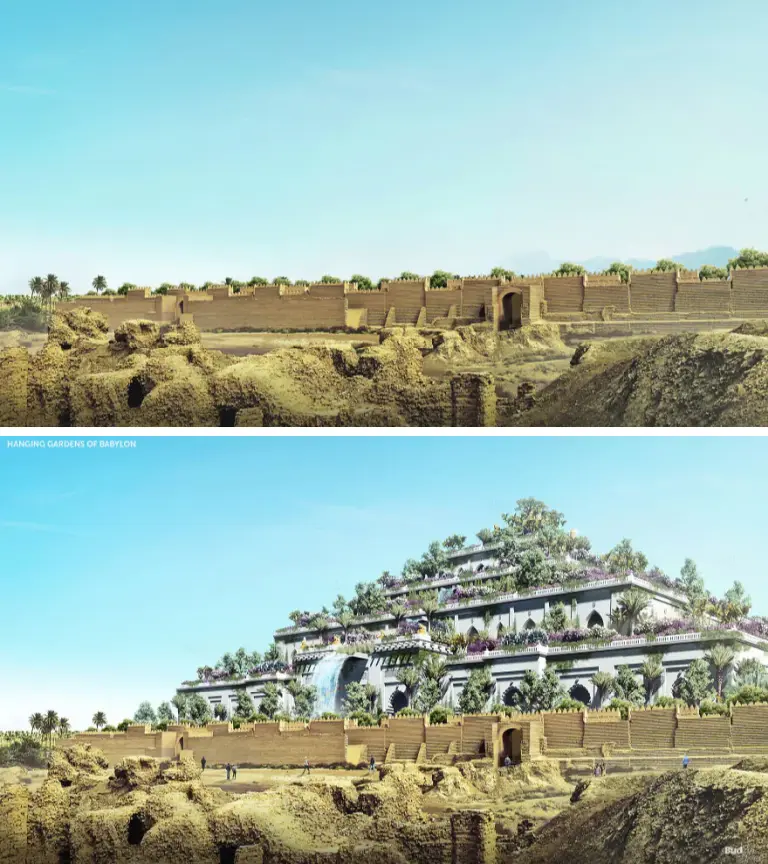
The Hanging Gardens of Babylon remain one of the most mysterious ancient wonders, celebrated for their beauty and engineering marvels. According to some sources, they were constructed by King Nebuchadnezzar II for his wife, Amytis, who missed the lush hills of her homeland. Other accounts debate whether the gardens existed in reality or only in the imagination of ancient writers. The gardens were said to be a series of terraces supported by arches and columns, filled with diverse plants and vegetation. They were irrigated through a complex system of pumps, canals, and reservoirs drawing water from the nearby Euphrates River. Representing the king’s power and love, the gardens showcased human ingenuity and artistry.
The Lighthouse of Alexandria
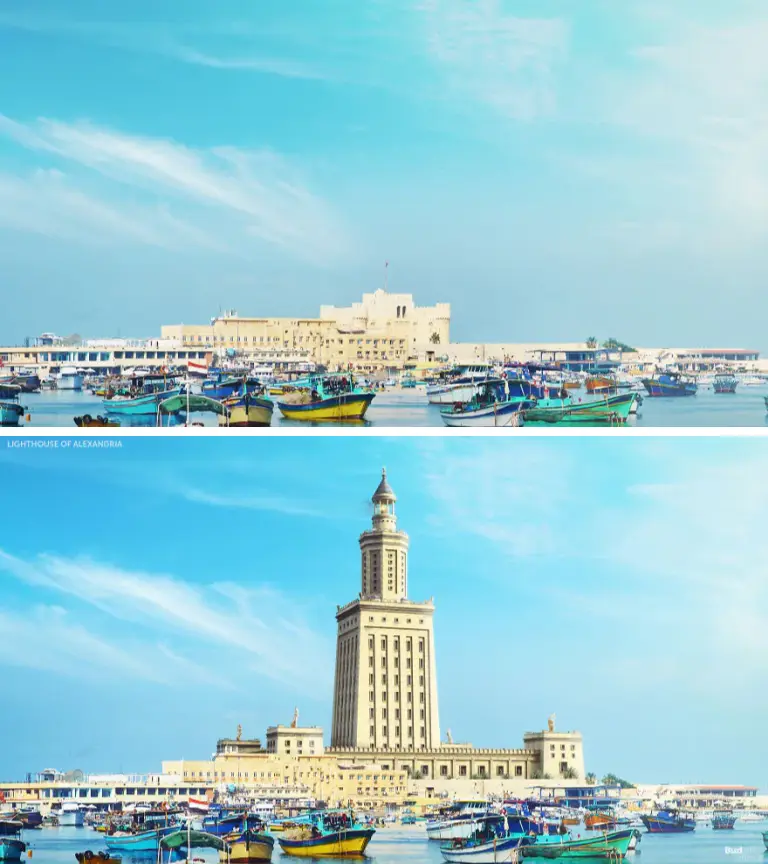
Believed to be the world’s first lighthouse, the Lighthouse of Alexandria was an extraordinary ancient structure that guided sailors into the port of Alexandria, Egypt. Constructed by the Ptolemaic Kingdom in the 3rd century BCE, it was one of the tallest man-made structures of its time, reaching over 100 meters (330 feet). The lighthouse featured three sections: a square base, an octagonal middle, and a cylindrical top where a fire burned at night. Some sources claim a statue of either Alexander the Great or Ptolemy I Soter, founder of the Ptolemaic dynasty, adorned the summit. Damaged by several earthquakes, the lighthouse eventually collapsed in the 14th century. Its remnants were later used to build a fort by the Mamluk Sultan Qaitbay in 1477. In 1994, French archaeologists discovered underwater ruins of the lighthouse.
The Mausoleum at Halicarnassus
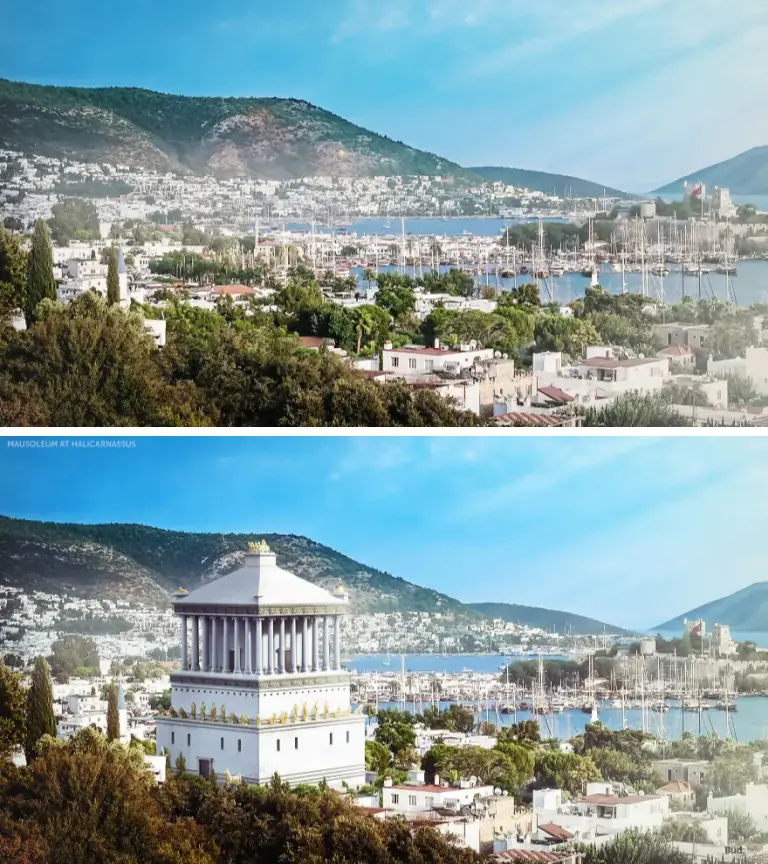
The Mausoleum at Halicarnassus was a magnificent tomb built in the 4th century BCE for Mausolus, a Persian satrap and ruler of Caria, and his sister-wife, Artemisia II. Located in their capital Halicarnassus, now Bodrum in Turkey, the mausoleum was designed by renowned Greek architects and artists. Standing approximately 45 meters (148 feet) tall, it featured a square base and a pyramid-shaped roof topped with a four-horse chariot. Admired for its beauty and grandeur, the monument was eventually destroyed by earthquakes, with its stones repurposed for other buildings. Fragments of its sculptures are preserved in the British Museum.
The Statue of Zeus
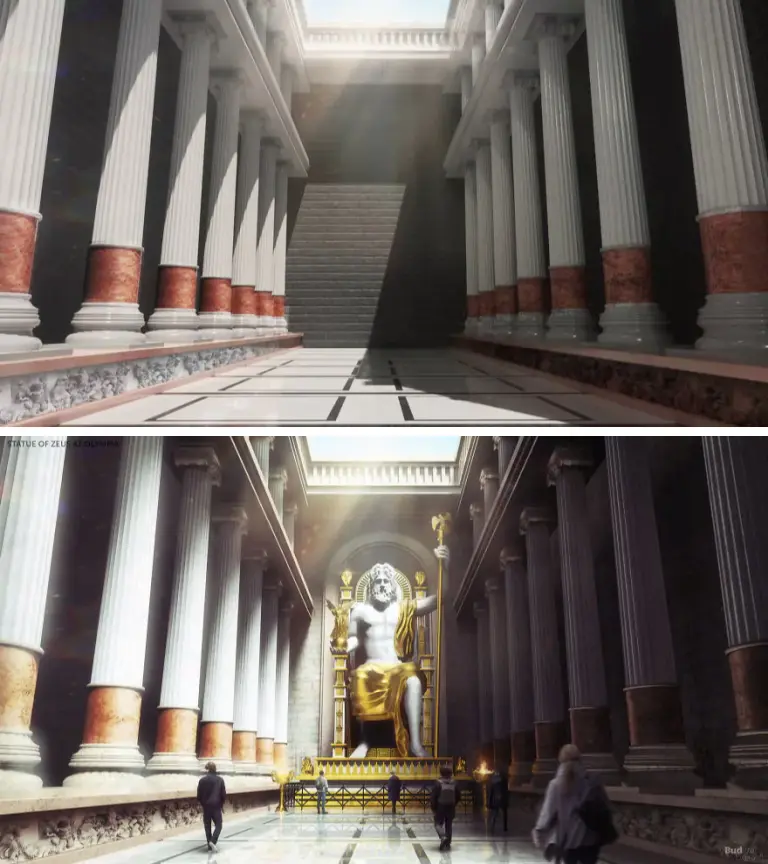
The Statue of Zeus at Olympia was one of the most impressive works of art in the ancient world. Crafted by the famous sculptor Phidias, who also created the Athena statue at the Parthenon, it depicted Zeus, the king of the gods, seated on a throne in his temple at Olympia, the site of the ancient Olympic Games. The statue stood approximately 12 meters (39 feet) tall and was covered in gold and ivory. Zeus held a small statue of Nike, the goddess of victory, in his right hand and a scepter topped with an eagle in his left. The throne was adorned with scenes from Greek mythology, backed by a painted screen. Unfortunately, the statue did not survive the test of time. Its cedarwood frame and throne were destroyed in a fire in 426 CE, while its gold, ivory, ebony, and gemstones were likely looted.
The Temple of Artemis at Ephesus
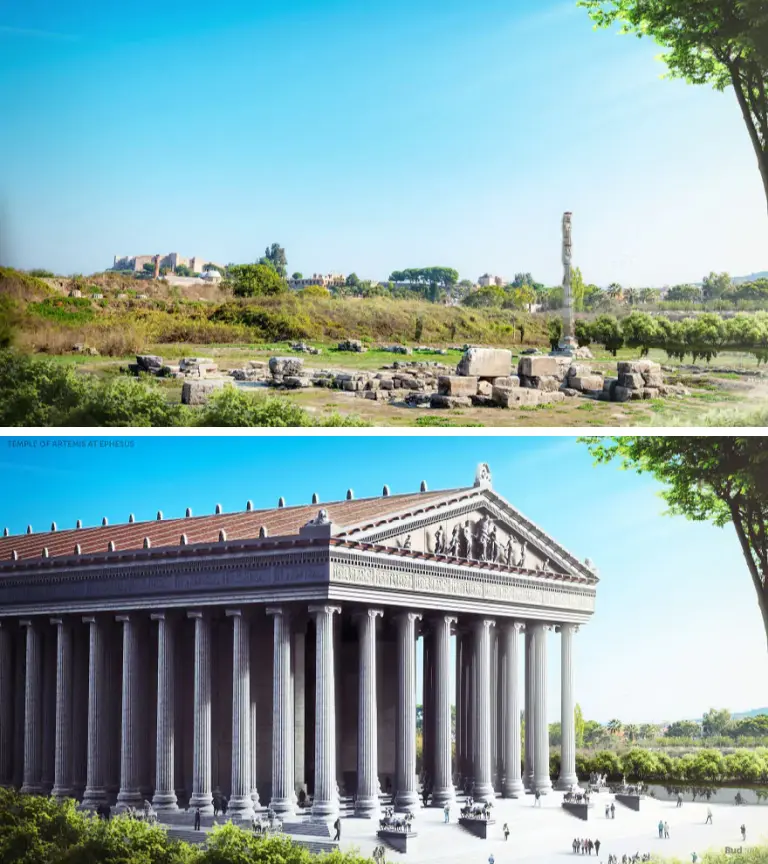
The Temple of Artemis at Ephesus was one of the most magnificent architectural achievements of the ancient world. Built to honor Artemis, the goddess of hunting and nature, the temple was much larger than other Greek temples and richly adorned with sculptures and decorations. Admired by people from across the region, the temple was tragically destroyed multiple times due to fire, war, and vandalism. Today, only its foundations and a few columns remain.
The Great Pyramid of Giza
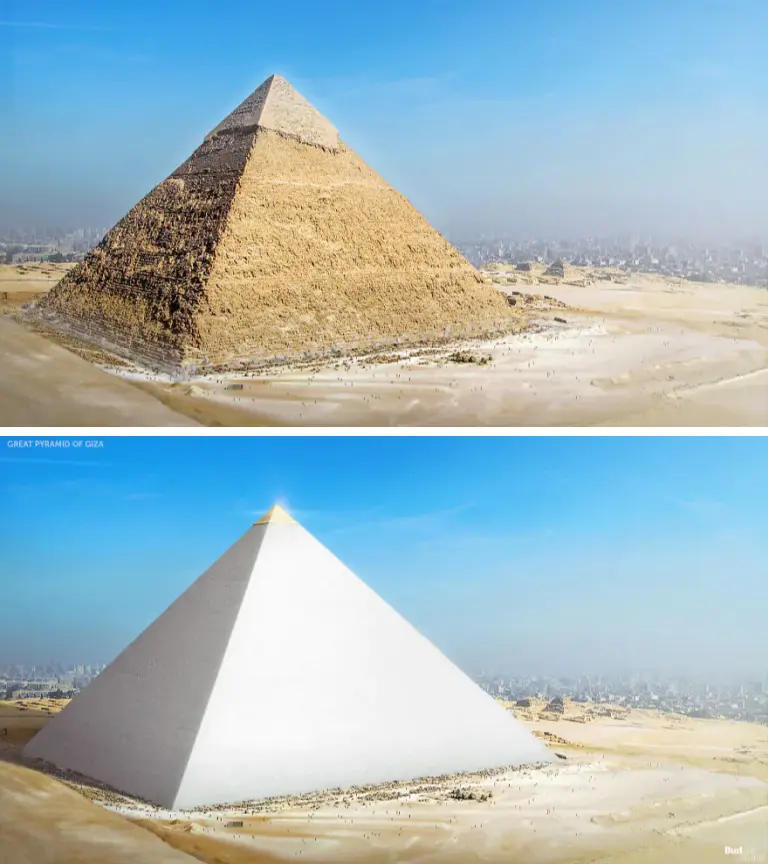
An exception to the list, the Great Pyramid of Giza still stands today, though it has lost much of its original grandeur. It remained the tallest man-made structure in the world for over four millennia until the 19th century. This massive pyramid, standing 147 meters (481 feet) tall, was built on a vast 13-acre area using 2.3 million blocks of stone weighing between 2.5 and 15 tons each. Constructed as the grand tomb of the Egyptian pharaoh Khufu, it was completed around 2560 BCE.
Although purely hypothetical, these images demonstrate one undeniable truth: we continue to marvel at the greatness of the ancients, unable to fully comprehend how they constructed such monumental works. While only remnants remain today, they still spark curiosity and inspire modern people to dream of visiting and witnessing these awe-inspiring sites at least once in their lifetime.






